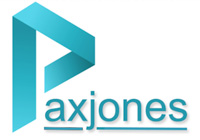Much of today’s Internet advertising terminology won’t be found in dictionaries because it is very new and is what the Internet Advertising Bureau (IAB) calls “online jargon”.
The rise of the so-called Web 2.0, web 3.0 and Web 4.0 in the last few years back led too much of the new language.
Here, we are mentioning below some of the important terms that you might want to know somewhat about. These are just a few of the terms used in the online ad business these days.
Online Advertising Terms you may not have known
Ad affiliate – A website that runs ads for another marketer in exchange for a commission on the revenue generated by clicks on the ad.
Algorithm — This is a set of ‘rules’ used by a search engine to determine the relevance and ranking of a web page.
Behavioral Targeting — An online marketing technique that collects previous consumer decisions to detect behavior patterns and develop targeting strategies. The consumer data or “psychographic characteristics,” as it is sometimes called, is usually collected with forms, “cookies” and the tracking of visits to particular areas of a website.
Bricks-and-mortar—An old term which is getting more attention on the Internet because it distinguishes between purely Internet firms such as Amazon.com and established retail outlets such as Macy’s, which have physical stores.
Deep linking — Linking beyond a home page to a particular page inside a website.
Interruptive formats – Ads that pop up on user’s screens, sometimes before the desired page opens and sometimes on top of the page.
Keywood marketing
A strategy in which marketers buy advertisements for certain keywords or search terms so that they can target the placement of their ads. It is a good idea to do some keyword research before spending the money.
Mobile media—Cellphones, iPhones, etc., that can also be used for advertising.
Personalizing—The consumer practice of modifying a home page by adding such features as scheduled content updates and regular feeds from other websites (See RSS).
Pixel—A space measurement unit for an ad. IAB has established standard pixel sizes for ads, such as 468 x 60, 125 x 125 and 120 x 90.
Rich media—A banner or other type ad that includes interactive, animation or other special features.
RSS (real simple syndication)—Flagging specific content on one website or blog and
delivering it (and its updates) to another site or computer.
Scheduled page updates—A website feature in which specific content is automatically updated as developments warrant.
Search Engine Optimization (SEO) – The use of Off Page Seo, on page seo and other link building techniques to get websites placed high in search engine results page.
Social media sites
Websites which allow and encourage individuals to communicate with one another, such as Twitter, Instagram and Facebook.
Third-person recommendations—Comments and ratings by either a website, search engine or Internet consumers. Consumers rely heavily upon such recommendations, especially user-generated reviews and ratings. That is the reason so many websites like yelp have become so popular.
Unique users – The number of different users who visit a website within a specific period.
Viral Marketing – A strategy in which advertisers encourage people to forward or share entertaining video, games, images, etc., with other users.
Wiki – A website that allows visitors to add or edit its content. Wikipedia is an example.





The website’s content is well-researched and reliable.